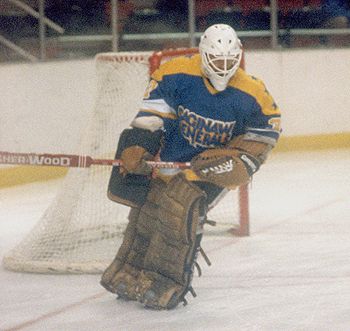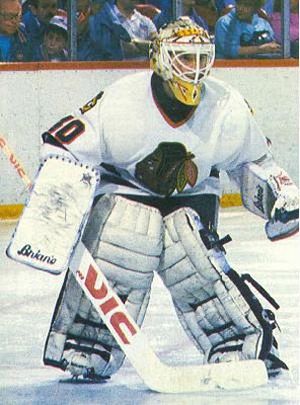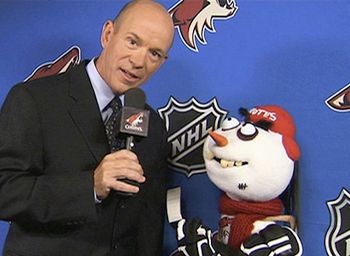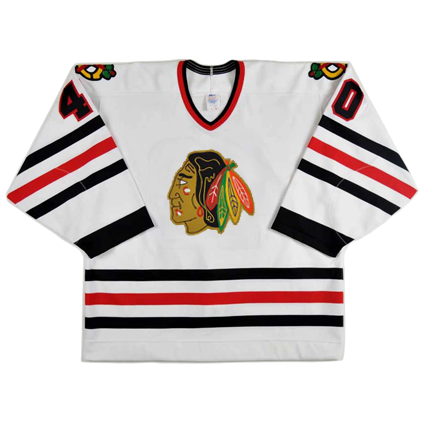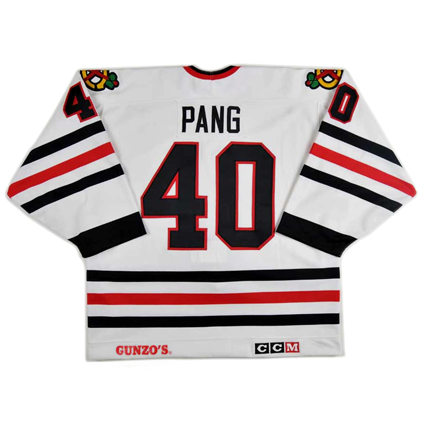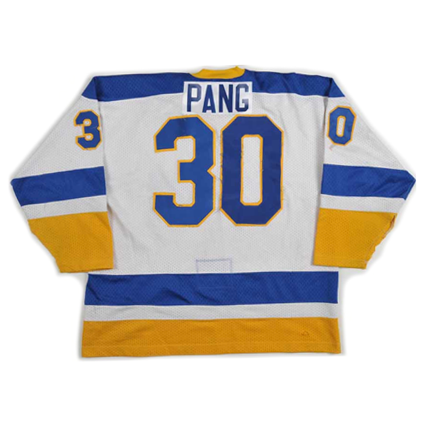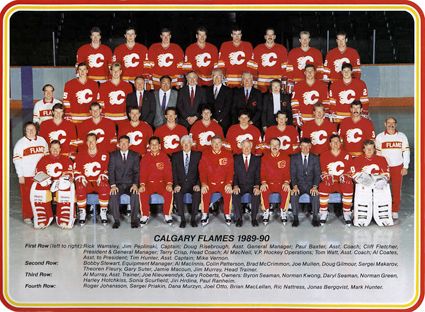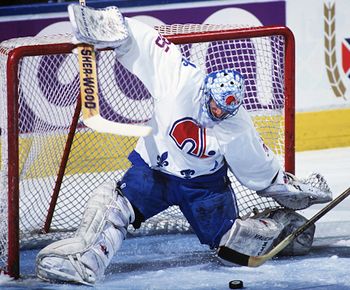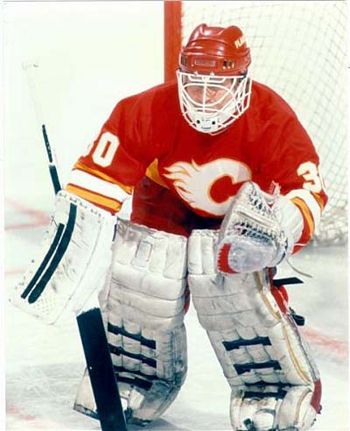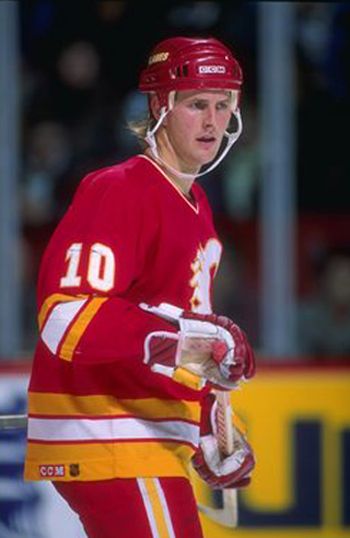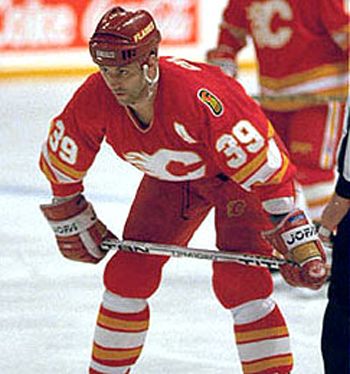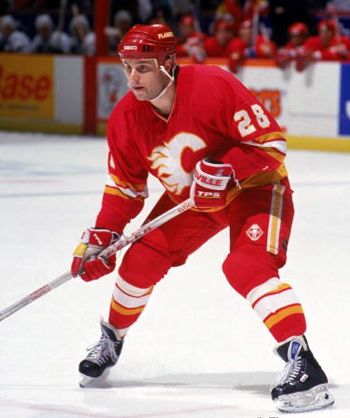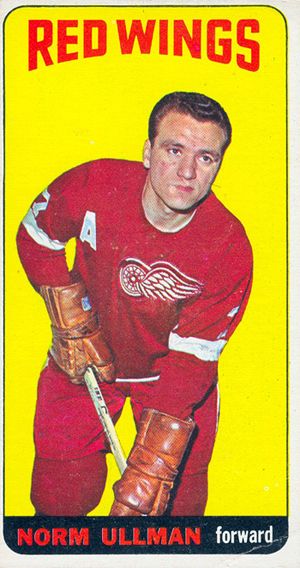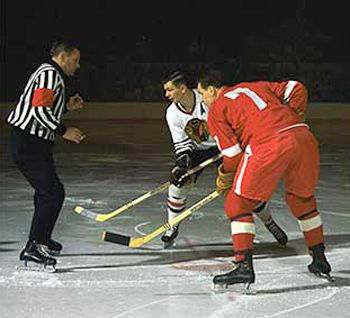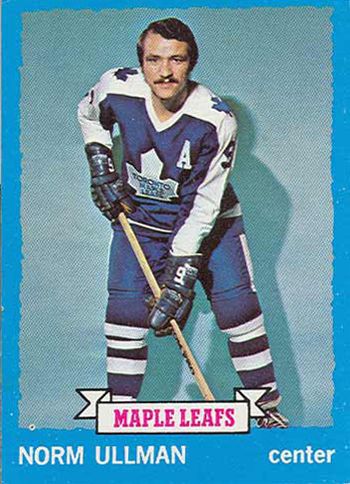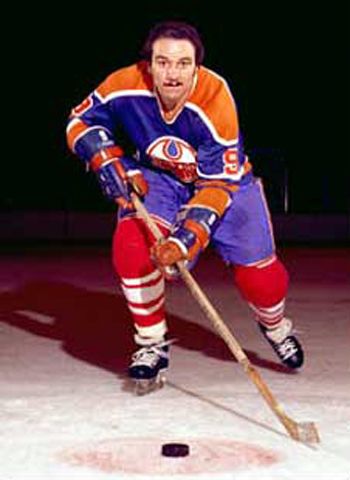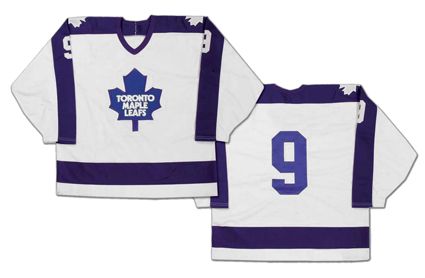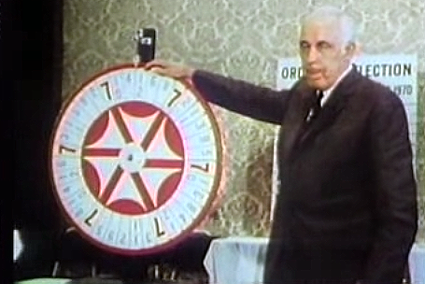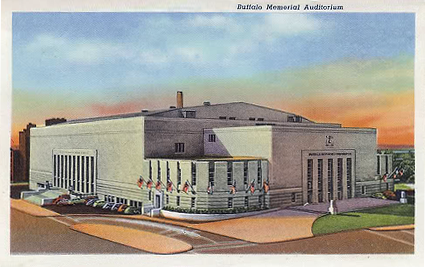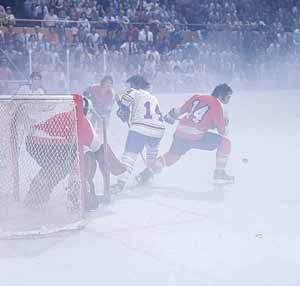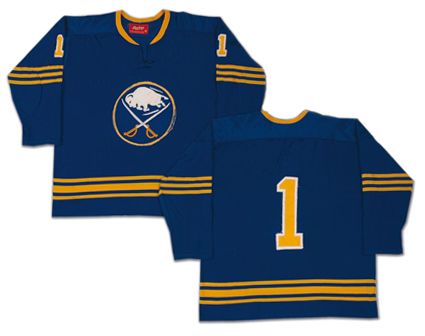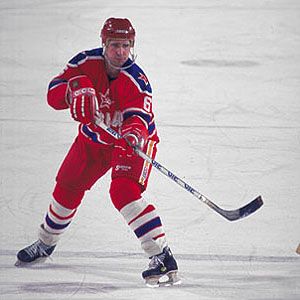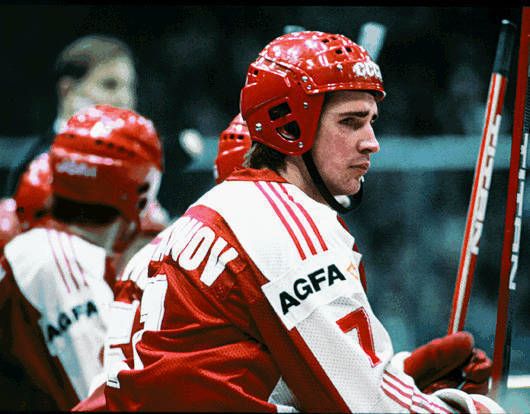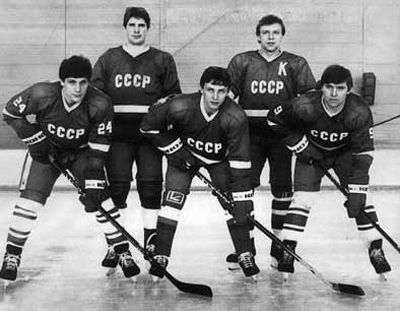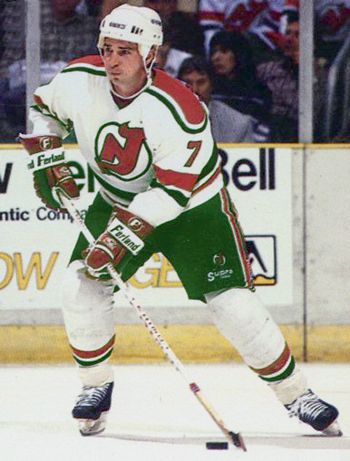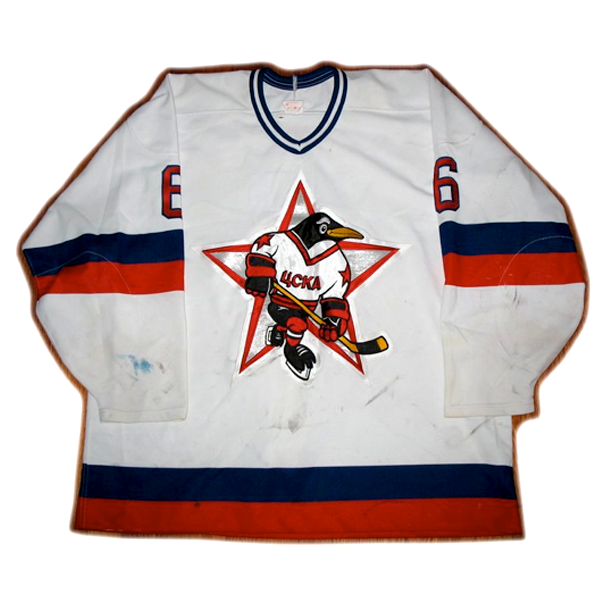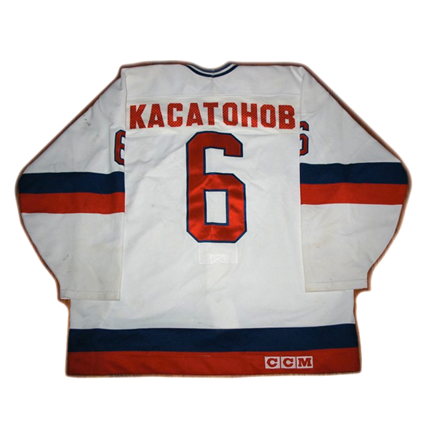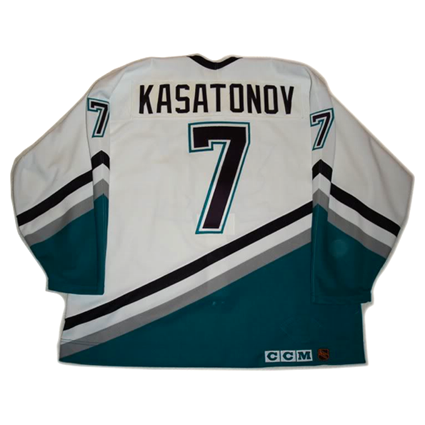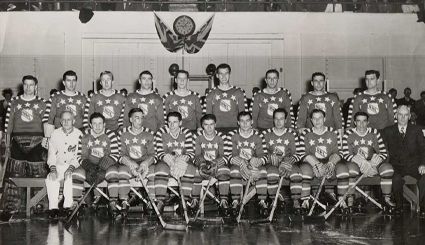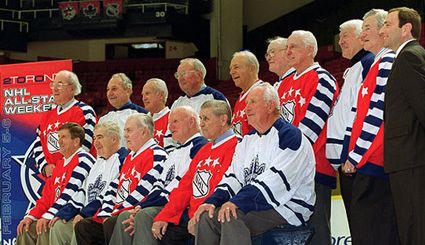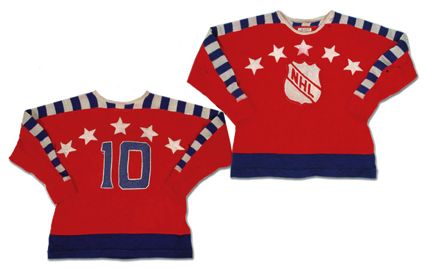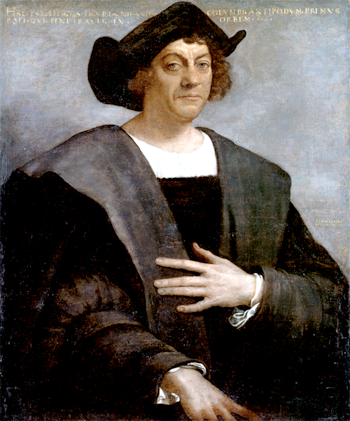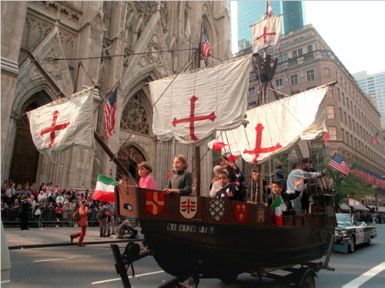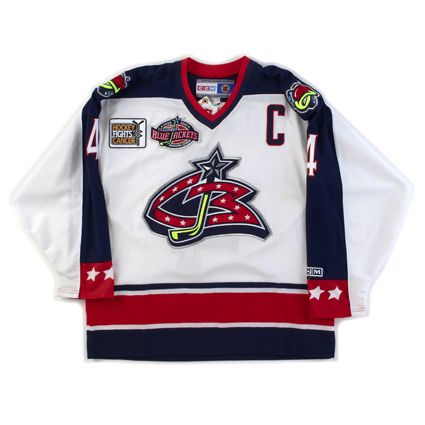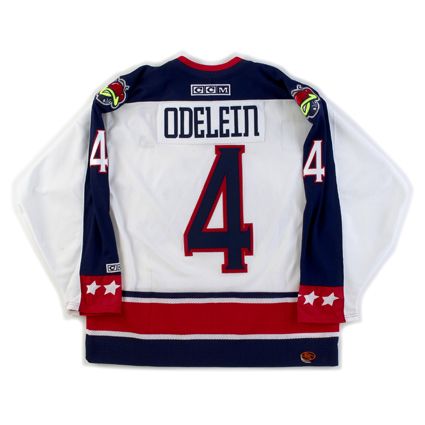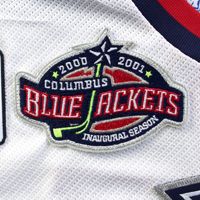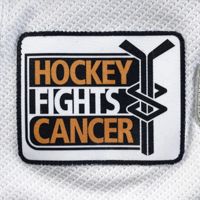On this date in 1989, the
Calgary Flames travelled to Le Colisée to take on the Quebec Nordiques.
The 1989-90 Calgary Flames
Rick Wamsely got the start in goal for the Flames while
Stephane Fiset was the starter for the home team.
Stephane Fiset got the start in goal for Quebec
The Nordiques opened the scoring at 4:26 with a goal from
Darin Kimble, his first of the still early season from
Claude Loiselle and
Greg Adams. Just over three minutes later,
Curtis Leschyshyn made it 2-0 for the Nordiques from
Marc Fortier and
Daniel Dore at 7:31 on a power play. Less than one minute later Wamsley's night was over when he was pulled after
Michel Goulet converted another power play opportunity from
Joe Sakic and
Mario Marios at 8:29.
Mike Vernon then came on in relief of Wamsley, who had given up 3 goals on 6 shots.
Mike Vernon entered the game in relief
Gary Suter stopped the bleeding for Calgary at 9:44 from
Joe Mullen and
Doug Gilmour at even strength.
Peter Stastny restored the Nordiques three goal lead when he beat Vernon at 15:03 from
Michel Petit and Finland's
Iiro Jarvi, also at even strength, to close out a great first period for the host Nordiques, who led 4-1 at the break.
Calgary wasted little time in the second period letting the Nordiques know they would not be going away quietly when
Joel Otto scored after just 37 seconds from Suter and Mullen.
Joe Nieuwendyk then pulled the Flames within a goal when he beat Fiset at 6:13 from
Al MacInnis and Soviet
Sergei Makarov at even strength.
The Nordiques then capitalized on a five minute major and game misconduct to the Flames
Theo Fleury for drawing blood while highsticking. First,
Guy Lafleur scored at 14:31 from
Jeff Brown and
Joe Cirella followed by Stastny restoring the three goal lead for Quebec from Brown and Dore just 28 seconds later. The final five minutes passed with no additional goals, leaving the Nordiques ahead 6-3 after two.
At 7:35 of the third,
Cirella put the Nordiques up by 4 before Brown made it a 5 goal lead at 11:27, with both goals being assisted by Stastny and Jarvi.
Now leading 8-3 with seven minutes remaining, things were looking good for Quebec, so there was likely little concern when
Gary Roberts scored an even strength goal for the Fames from Makarov and
Rick Nattress at 13:27 to cut the lead to 8-4. Eyebrows might have been raised when Roberts scored again 16 seconds later from Makarov and Nieuwendyk but when
Jim Peplinski beat Fiset for the Flames third goal in just 27 seconds (from
Paul Ranheim and MacInnis) to close the gap to 2, the Nordiques knew they once again had a game on their hands.
Roberts scored twice in 16 seconds
When Cirella was whistled for a penalty against Quebec at 15:07, tensions must have risen among the 15,391 home fans, but throats must have really tightened when Marois was sent off while helping kill Cirella's penalty at 16:55, creating a brief two-man advantage for Calgary. Tables then turned when MacInnis found himself in the box for the Flames just as Cirella's penalty was set to expire, negating the Calgary advantage from Marios' penalty.
As time was winding down, the Flames hopes were dealt a severe blow when Roberts was given a double minor and a game misconduct at 19:41 while the Nordiques' Cirella received a single minor for his part in the fracas - leaving Calgary shorthanded for the final 19 seconds of the game and still trailing by 2.
Right off the ensuing faceoff, and with Vernon having been pulled for an extra attacker, Gilmour lit the lamp from Otto and MacInnis at 19:45 - shorthanded - to reduce the once 5 goal advantage to 1 with 15 seconds to play.
Gilmour scored shorthanded for Calgary
Then, from a center ice faceoff, somehow, Gilmour won the draw and got the puck to
Ranheim who beat Fiset with a wrist shot from the top of the slot - with the Flames still shorthanded - for the fifth time in 2:22, just
four seconds after Gilmour's goal, to complete the amazing Flames comeback. The two goals four seconds apart not surprisingly set an NHL record for the Fastest Two Shorthanded Goals in league history.
Ranheim's goal tied the game and set an NHL record
The overtime passed without any additional scoring, leaving each team with a point from the unfathomable 8-8 draw, which no one saw coming with the road team down by 5 with under seven minutes to play.
None of the goalies acquitted themselves very well, with Vernon finishing with 17 saves on 22 shots in 56:24 and Fiset, who somehow managed to stay in the game after giving up three in 27 seconds, made 27 saves on 35 shots.
The Flames would go on to win the Smythe division with a 42-23-15 record but were bounced in the first round of the playoffs, while the Nordiques had a dismal season at 12-61-7 for 31 points, making them the doormat of the league, finishing a full 33 points back of the second worst team.
Today's featured jersey is a
1989-90 Calgary Flames Doug Gilmour jersey. That season was the Flames 10th season in Calgary and they marked the occasion by wearing a patch on their upper left arm, rather than the now traditional upper right chest.
When the Flames moved to Calgary from Atlanta back in 1980 they simply retained the same jerseys worn in Atlanta, only with the logo changed from a flaming A to a flaming C. This style would remain unchanged through the 1993-94 season before being replaced with a new style after a long 14 year run.
This style was then revived by the club as a throwback jersey in 2009-10 for their 30th anniversary season, a pleasing and well received return which prompted the team to make it their alternate through the 2012-13 season.

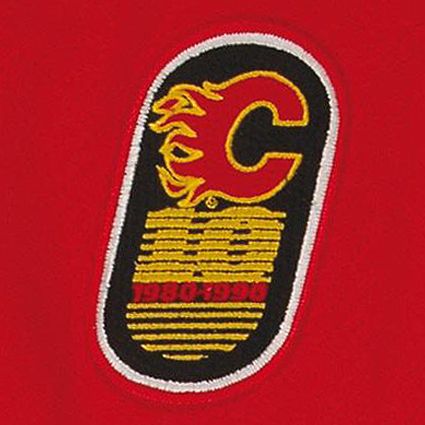
Today's video selection is a compilation of goals by Glimour when he was a member of the Flames.

